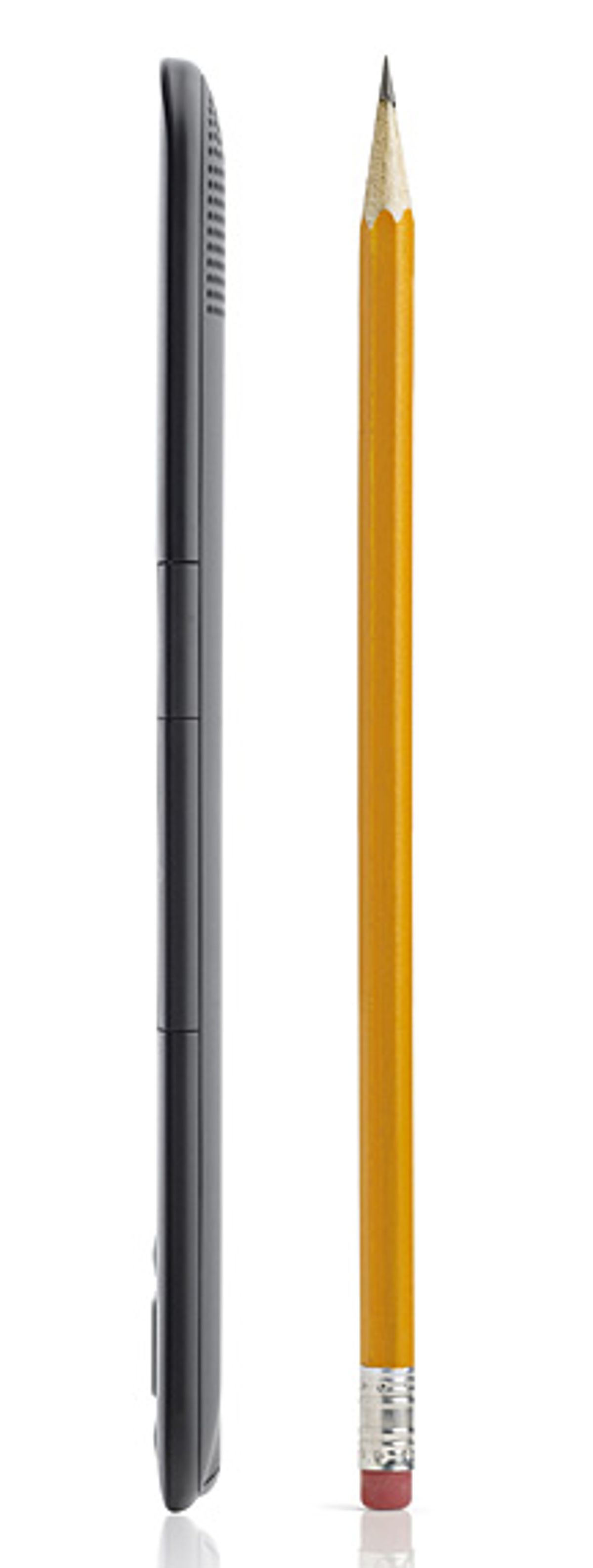This is part of IEEE Spectrum's 2010 Holiday Gift Guide.
As soon as the new Kindle began shipping, I put three of my family’s five older Kindles up for sale on eBay. Amazon’s third-generation e-reader is just that good.
Amazon has retained the Kindle’s 6-inch screen size but tweaked the latest E Ink display with what it calls font hints, a way of using software to fine-tune the electrical pulses that flip pixels to black or white. The result is a faster screen that offers three different fonts instead of one font in different sizes.
The screen contrast is now so good that for the first time I can read my Kindle in dim light. But if you want a backlight anyway, Amazon now offers a cover with one built in and powered by the Kindle itself. The light goes off automatically whenever the Kindle goes into sleep mode, which is good news for me, given how many book-light batteries I’ve wasted falling asleep with a great novel.
I haven’t had a chance to fully test the battery life, which Amazon puts at a solid month, based on a sparing use of Wi-Fi. But I have held the Kindle for hours, so I appreciate the new thin-as-a-pencil design. Jay Marine, Amazon’s director of product management, says the company shaved plastic off the frame and shrank the keyboard—the result of studying readers who are old, young, disabled, have different size hands, or hold books or Kindles in different positions.
"It’s the best reading device in the world," Marine says. It sounds like pure salesmanship, but as the owner of the latest iPhone and an iPad, as well as two older Kindle models, I might have to agree.
The Kindle is now narrow enough to hold between your thumb and your pinky and can slip into most jacket pockets. It’s about 20 percent smaller and, at 247 grams, 15 percent lighter than its predecessor. And it’s cheap. Amazon has slashed the price to US $189 and goes even lower for a version that has Wi-Fi but no 3G wireless access for downloads ($139). The cover-and-book-light accessory is about $59.
I admit I’m a bit of a Kindle fan. Okay, more than a fan. When I reviewed the very first Kindle in these pages in July 2008, I closed by saying, "Hi. My name is Sherry, and I’m a Kindleholic." Even before I returned that first Kindle review unit to Amazon, I ordered ones for myself, my mom, my kids’ babysitter, and two of my nephews—at the original price of $399. My ardor was widely shared. That first Kindle, with its very readable E Ink screen and free wireless 3G connection to Amazon’s vast e-bookstore, sold out in four and a half hours.
The second-generation Kindle was released in February 2009 with improved software and a sleeker form. It allegedly became the device most often given as a gift on Amazon, but I couldn’t warm to it. Its smaller buttons—which required me to turn my wrist uncomfortably inward—were an overreaction, I thought, to complaints that the original Kindle was prone to accidental page turns. Soon after came the larger and heavier Kindle DX. Its 9.7-inch (25-centimeter) screen is terrific if you need to read a lot of PDFs, but not so terrific if you want to get lost in a great book.
The newest Kindle has even tinier buttons, but you can go back to using the much friendlier wrist-out page-turning motion. The Kindle now reads PDFs properly, has more than 3 gigabytes of storage, and if you use the Wi-Fi sparingly, allegedly holds a single charge for a month.
How does Kindle plan to compete with the iPad as an e-reader? The iPad, Marine says, is the perfect laptop shopping device and very "helpful" to Amazon, which is, after all, a leader in e-commerce. Now that’s salesmanship.
About the Author
Sherry Sontag is a coauthor of the best seller Blind Man’s Bluff: The Untold Story of American Submarine Espionage (Harper Perennial, 1998). She lives, works, and covets digital media devices in New York City.

